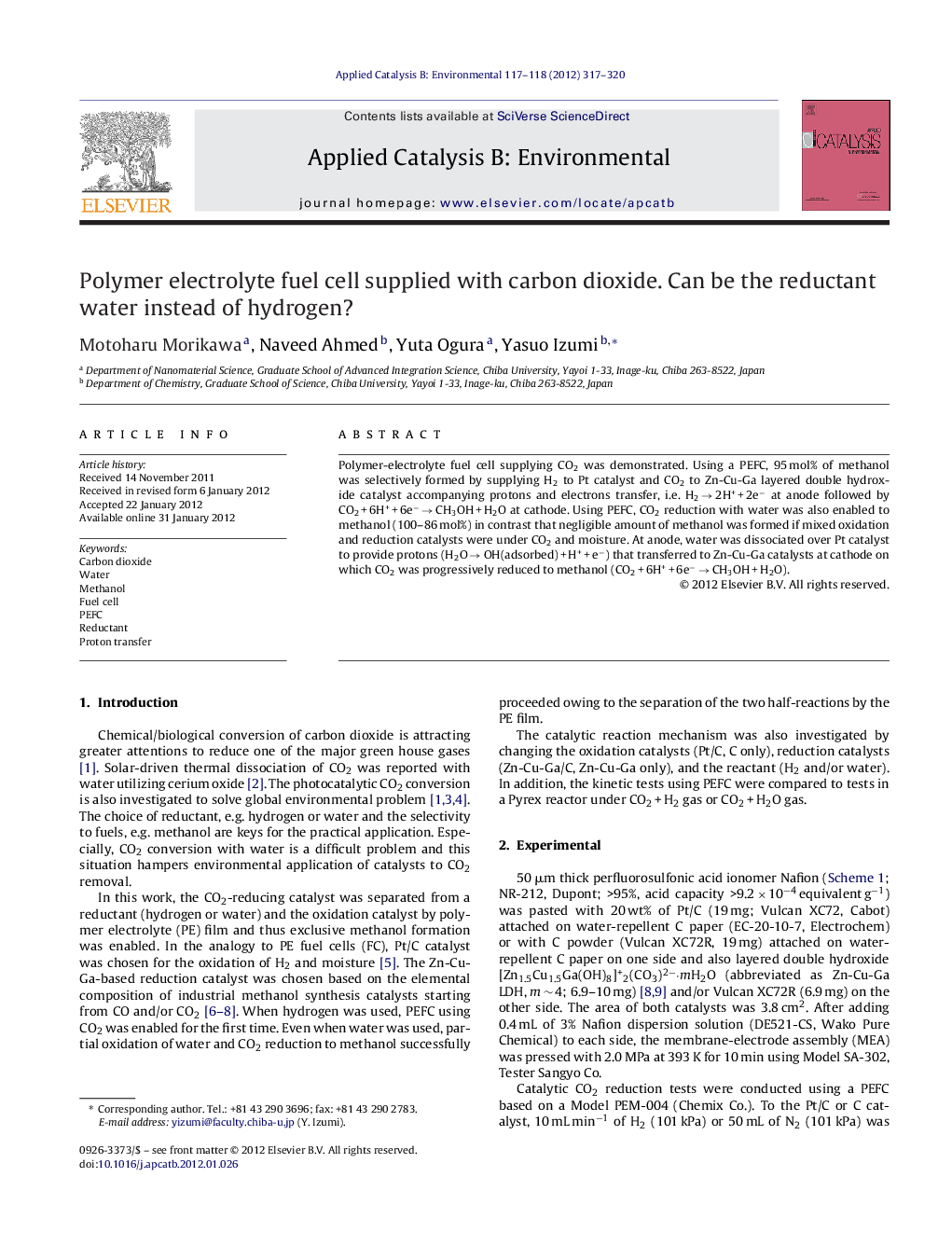| Article ID | Journal | Published Year | Pages | File Type |
|---|---|---|---|---|
| 46383 | Applied Catalysis B: Environmental | 2012 | 4 Pages |
Polymer-electrolyte fuel cell supplying CO2 was demonstrated. Using a PEFC, 95 mol% of methanol was selectively formed by supplying H2 to Pt catalyst and CO2 to Zn-Cu-Ga layered double hydroxide catalyst accompanying protons and electrons transfer, i.e. H2 → 2H+ + 2e− at anode followed by CO2 + 6H+ + 6e− → CH3OH + H2O at cathode. Using PEFC, CO2 reduction with water was also enabled to methanol (100–86 mol%) in contrast that negligible amount of methanol was formed if mixed oxidation and reduction catalysts were under CO2 and moisture. At anode, water was dissociated over Pt catalyst to provide protons (H2O → OH(adsorbed) + H+ + e−) that transferred to Zn-Cu-Ga catalysts at cathode on which CO2 was progressively reduced to methanol (CO2 + 6H+ + 6e− → CH3OH + H2O).
Graphical abstractFigure optionsDownload full-size imageDownload as PowerPoint slideHighlights► PEFC current was obtained by supplying H2 to Pt/C and CO2 to Zn-Cu-Ga catalyst. ► Utilizing PEFC, methanol was formed even from water and CO2. ► Methanol synthesis using PEFC was compared to a test for Pt/C and Zn-Cu-Ga mixture. ► Negligible methanol was formed from water and CO2 for the mixed catalysts. ► Water was partially decomposed and protons apparently moved in Nafion to cathode.
